Field Notes: Recalibrating perspectives and observing the environment in Lapland
Published 24 November 2023 by Elsa Ferreira
Since 2011, the Bioart Society has been organizing a biennial group artist residency at the Kilpisjärvi biological station in Lapland. This year, the two-week event hosted 23 participating artists, who gathered impressions of the surrounding nature. An immersive experience in the Great North, free from any expectations of production output, to perceive differently the references of our landscapes and of ongoing climate change.
At Kilpisjärvi, on the border between Finland, Sweden and Norway, the landscapes consist of mountains and lakes. In September, it’s already snowing, and waterfalls form stalactites. The wind is cold, the autumn-hued vegetation is stark, and the Northern Lights that filter their way through the clouds are spectacular. Here, people swim in the near freezing water of giant lakes after sweating in the burning heat of tiny wooden saunas.
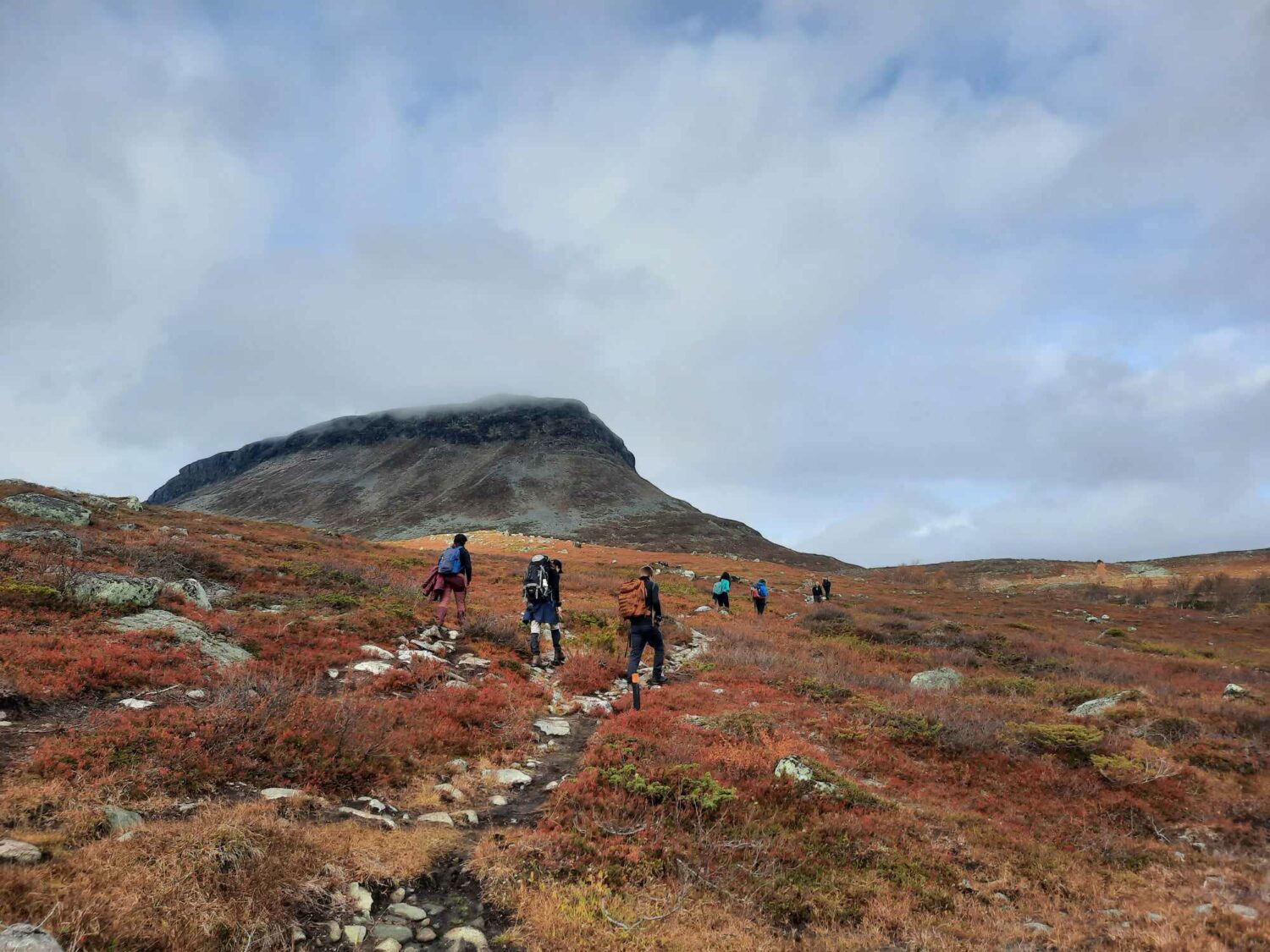
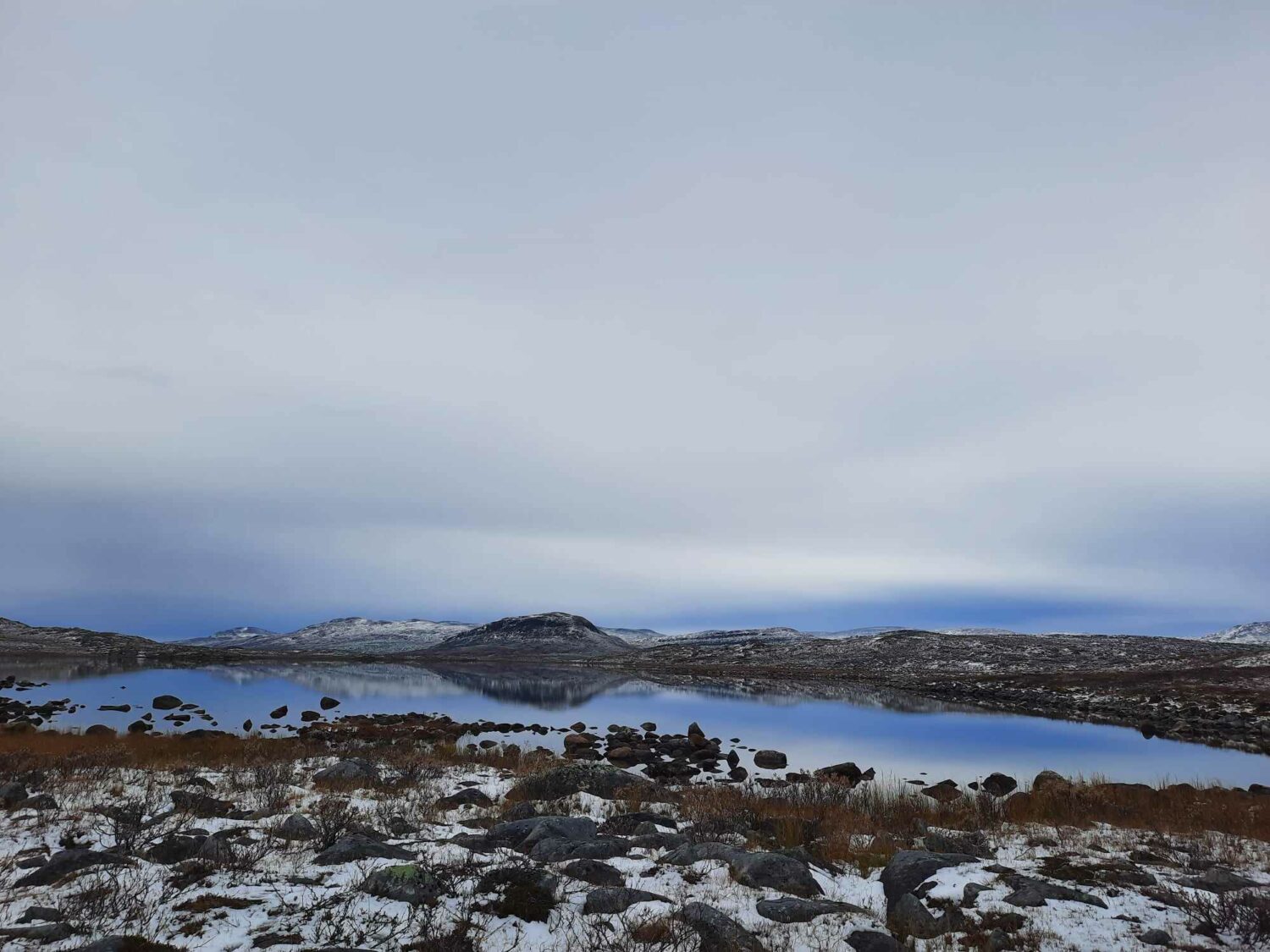
This is the majestic and demanding environment in which the Bioart Society hosts its biennial residency, Field Notes. This year, the residency lasted only two weeks, during which 23 artists, thinkers, researchers and scientists spread themselves out into three pre-selected groups. In addition to the various group activities, master classes were given remotely by guests: Jussi Eronen, professor of socio-ecological ecosystems at Helsinki University; Oula Seitsonen, archaelogist and geographer at Oulu University; Leena Valkeapää, environmental artist who has been collaborating with the Bioart Society since 2009 and living in the Great North even longer; Liisa-Ravna Finbog, Sami academic, artist and author.
The global theme, opening a multi-year cycle around the topic at the Bioart Society, is “The North Escaping”. “It’s a very timely and important topic,” says Erich Berger, researcher, artist, curator and former director of the Bioart Society. “We are no longer just talking about if climate change is happening or not, we really need to look at what it is doing to us. There is always a very strong focus on how the environment is changing, but there is less focus on what it is doing to people and their relationship with the environment, with their identity, with their everyday life.”
Here in the Great North, where the climate is changing faster than elsewhere and endangering the traditional way of life of the native Sami people, we can observe these changing relationships. But only if we know how to look, measure, perceive.
Such considerations occupied the 23 Field_Notes participants, led by the three “hosts” Erich Berger, Till Bovermann and Elizabeth McTernan — artists familiar with this environment who came to accompany their groups. The spontaneous slogan of the three groups soon became “attunement” — leveling our tools of perception in order to readjust our gaze on the surrounding environment, our relationship with it and environmental issues.
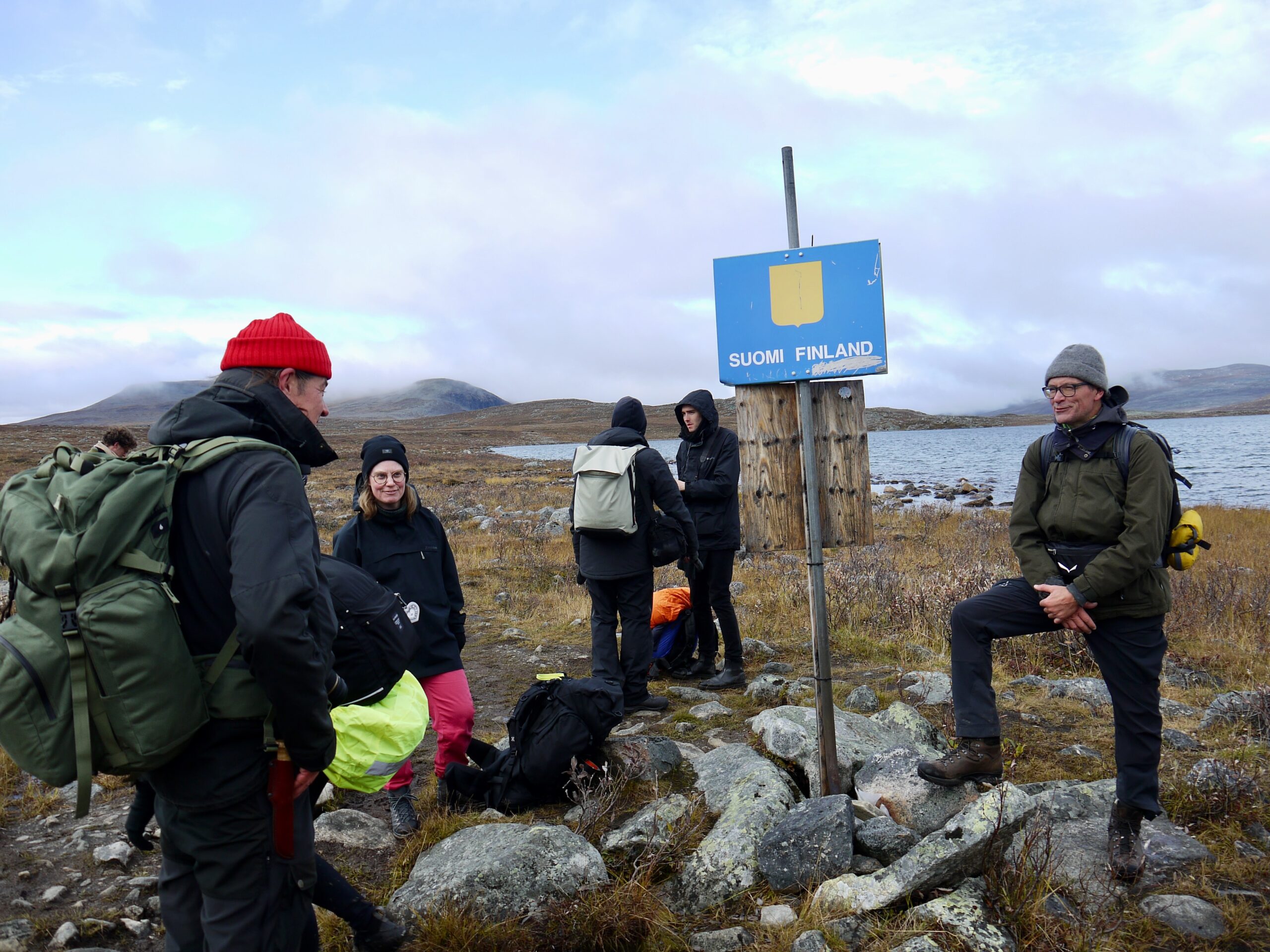
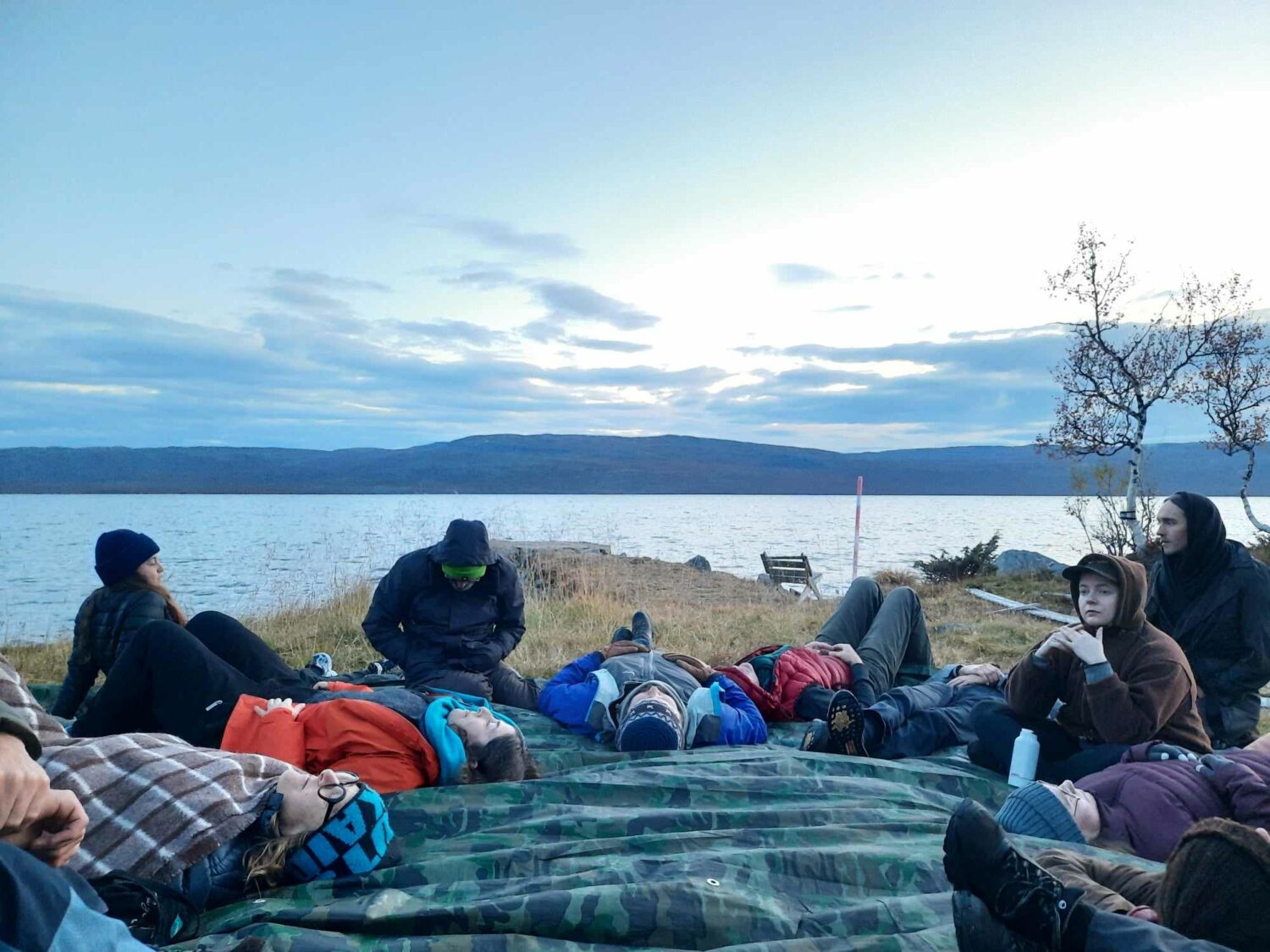
Erich Berger and the TALE group: Rethinking deep time
“There is a need for time literacy,” advances Erich Berger, who is conducting a thesis on this very topic. For Field_Notes, he urges his group to understand different temporalities. According to Erich, changing one’s relationship with time also implies changing one’s capacity to perceive changes. While we tend to believe that the environment is something stable that does not change, “It’s not the case. It is something very dynamic, on a different timescale. As humanity enters a base where we are becoming a geological actor, where human activities have consequences on a timescale that is far beyond the timescale that we usually operate in, there is a necessity to become time-literate, in order to understand this impact and develop content, justice, ethics, compassion, which go into areas of time that we haven’t thought about.”
The necessity is all the more urgent as Big Tech increasingly embraces the philosophy of longtermism — a derivative of effective altruism that considers the well-being and survival of the greatest number without distinction of timescale. For example, it would justify sacrificing thousands of people today if it would benefit millions of others in 2000 years.
“I don’t want to answer to longtermism, but it’s on my mind,” admits Erich. “It’s an absolutely fascist implementation of the concept of time. Longtermism is only focusing on the survival and unfolding of the potential of humanity on the back of the present.” With a better understanding of time, we are better equipped to resist this way of thinking.
In order to search for this deep time, Erich and the six members of his group go out to places where temporalities other than the present have manifested. One example is the Valley of Time, where the paleocontinents of Baltica and Laurentia collided about 400 million years ago.
“In a certain way, you could say that it’s the border between Europe and America,” Erich laughs. Geological vestiges of the past era can be found on site. Artists collect samples, give lectures in the open air or get into touch with their environment: “attunement”. They feel out the past, but also the future. The group uses speculative narration to project themselves into the future.
“We imagined how we could die, how our remains would be treated or preserved, when and by whom we would be found, and what conclusions these entities could come to,” Erich explains. “It might seem morbid, but it was fun. It wasn’t about death but about producing vehicles for thinking about the way time manifests itself.”
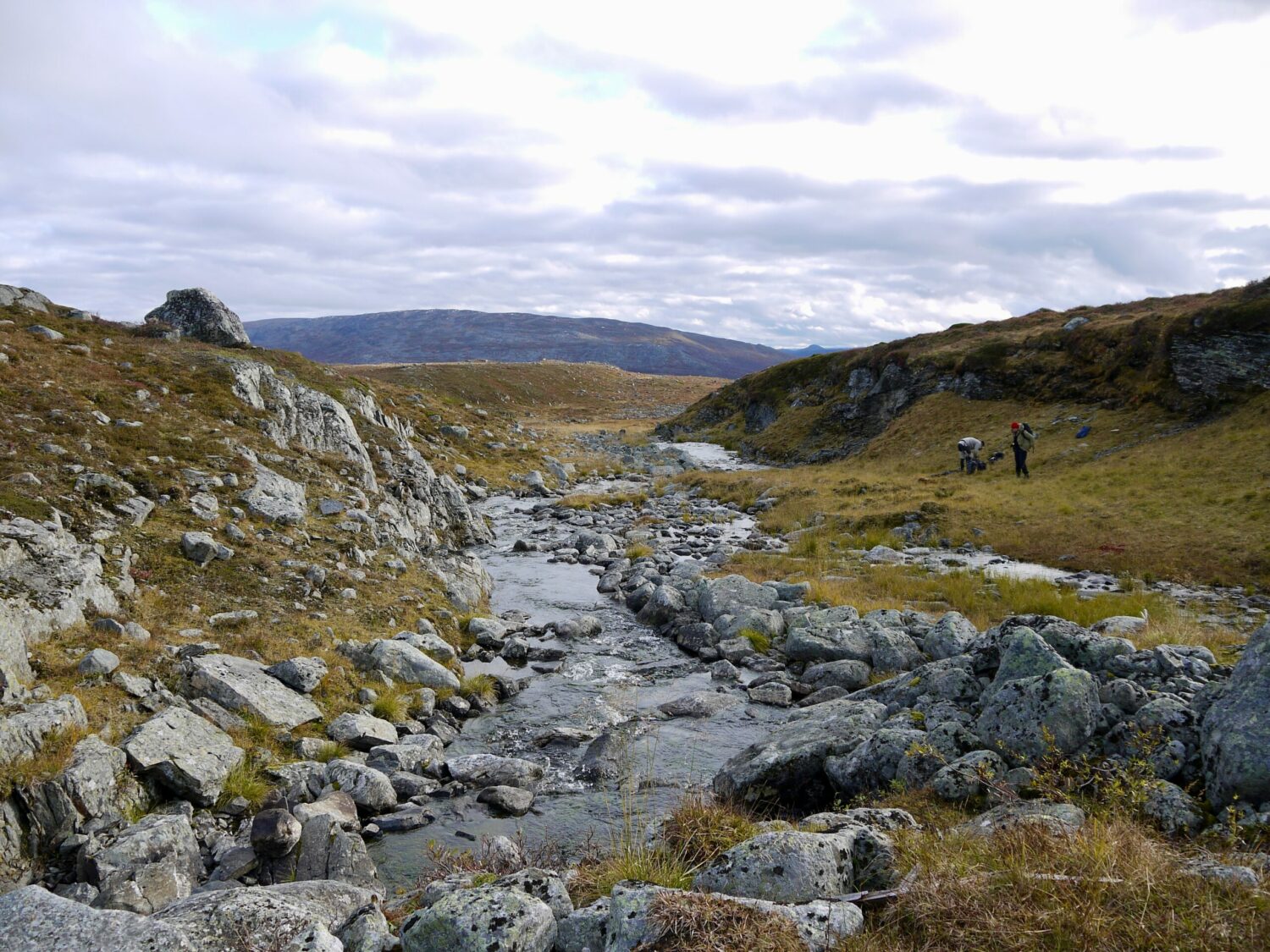
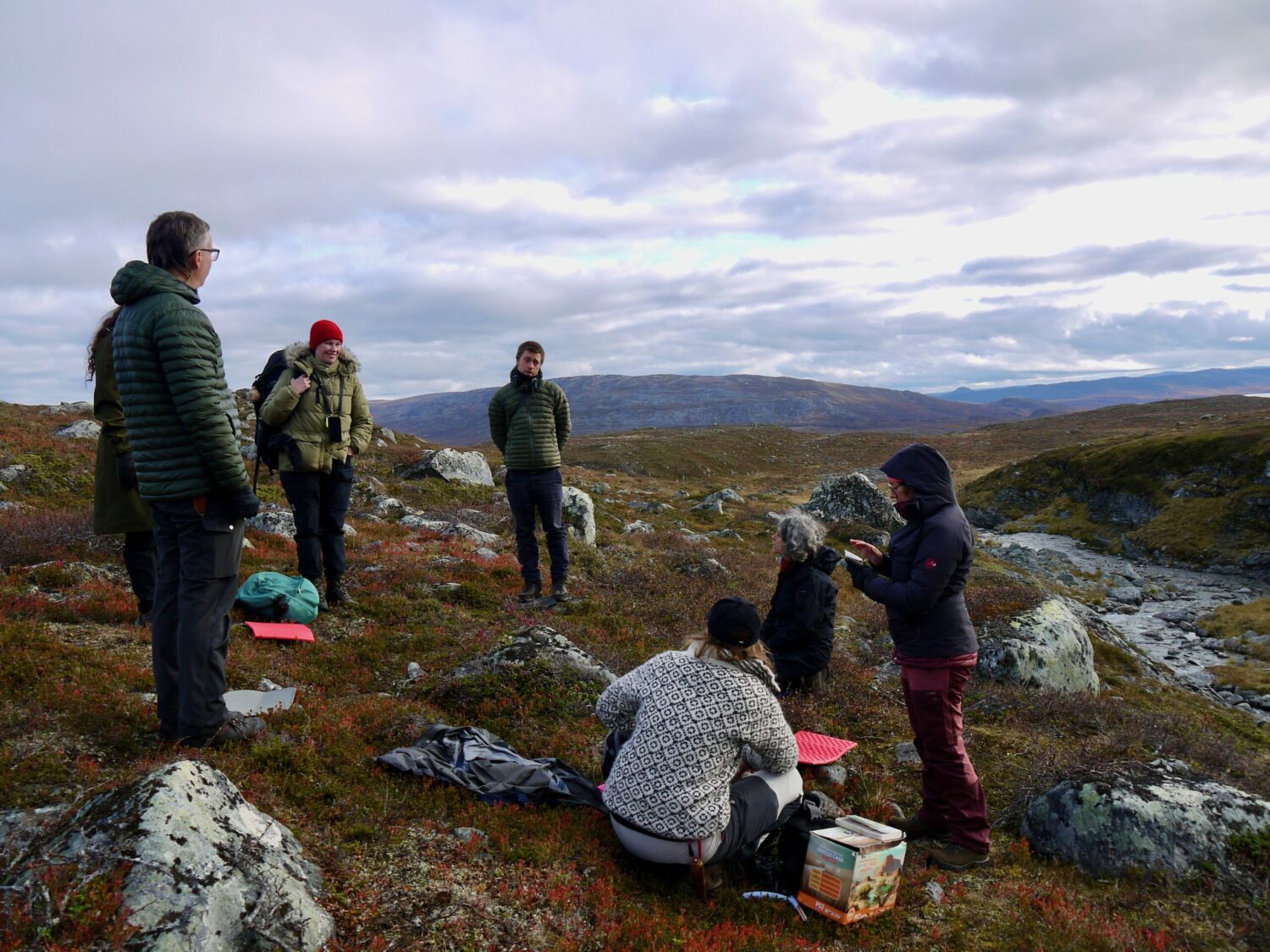
Till Boverman and the Wait and Hear group: Refraining from acting
Till Boverman, a professor in sound art at the University of Music and Performing Arts Munich with a background in computer science, has been participating in Field_Notes activities for the past ten years. “It had a profound impact on my artistic career and how I think about art in general,” he says. In this region of Kilpisjärvi, he studied “microworlds”, spaces that are significantly different from the rest of the organic landscape, often covered with moss and surrounded by water. His artistic practice involves developing methods to explore these spaces, through photography, field recording or live coding, as a way of “encountering the other”.
With a similar focus on the quasi-imperceptible, he developed the concept of “open exploration based on listening” for this year’s Wait and Hear group: “While we spend time in the field and critically analyze our surroundings, ourselves, and our interrelation to the different forms in which Kilpisjärvi presents itself, we will try to resist the urge to immediately engage for as long as possible. Instead, we will gather on fells listening to wind, stones and water. We will observe the hustle and bustle of the border town with all its social and cultural clashes. Last but not least, we will engage with the various stakeholders that are entangled within the Organism(s) themselves.”
“Very often, not doing is the best way of doing,” says Till, summarizing an idea borrowed from the Slovenian philosopher Slavoj Žižek. “Our species has a tendency to act blindly and resort to quick fixes that very often go very wrong. We choose a soft, patient approach, where we are waiting for someone or something to speak to us.”
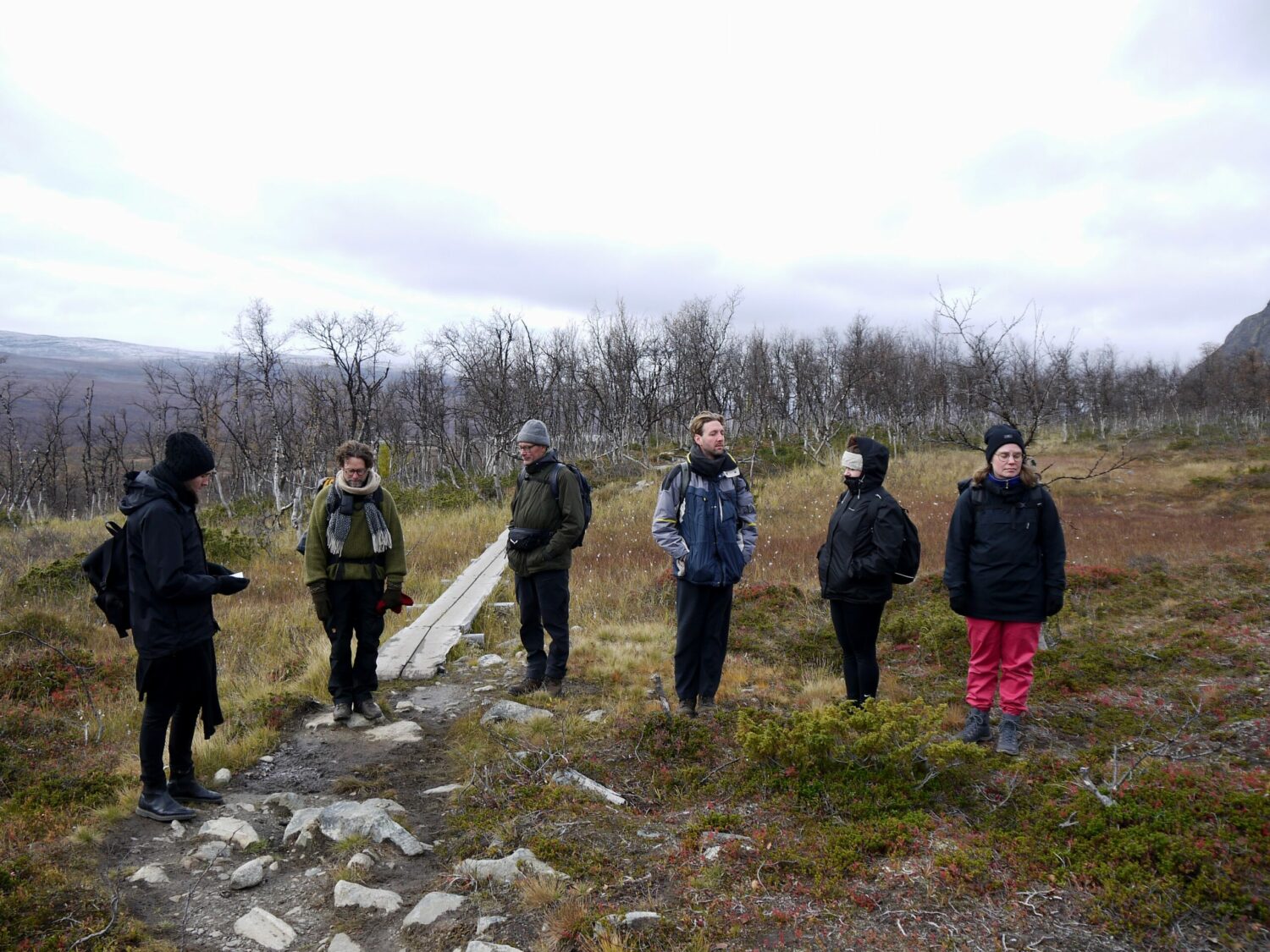
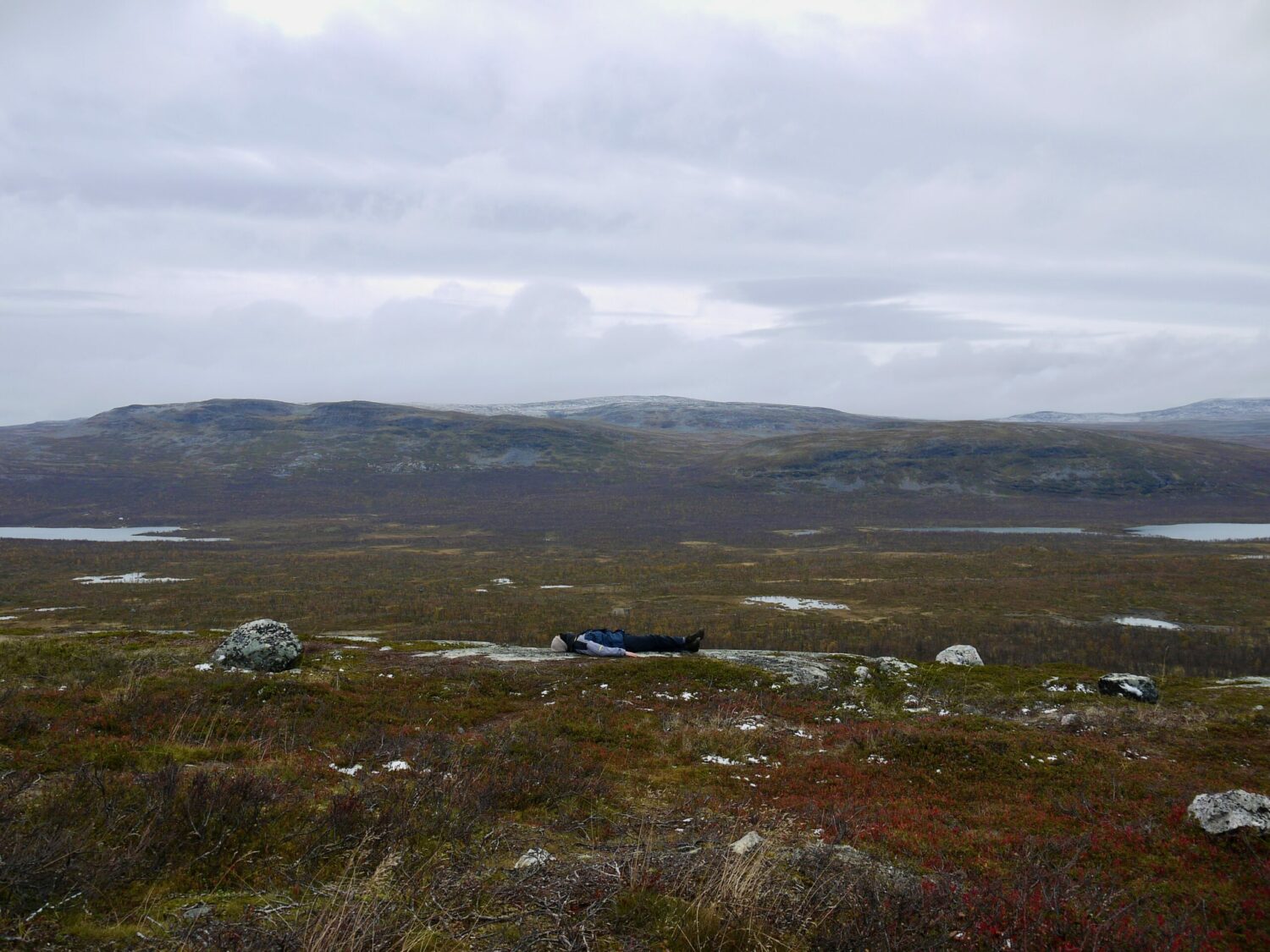
In order to apprehend the complexity of surrounding ecosystems and their interdependencies, group members surrender themselves to immobility, non-action, listening and waiting. They lie on rocks, listen to the wind and visit places steeped in history: the frontier dividing three nations or along the reindeer fence, a highly political and sensitive affair on this Sápmi territory. They also listen to the barely audible through contact microphones and sound recorders.
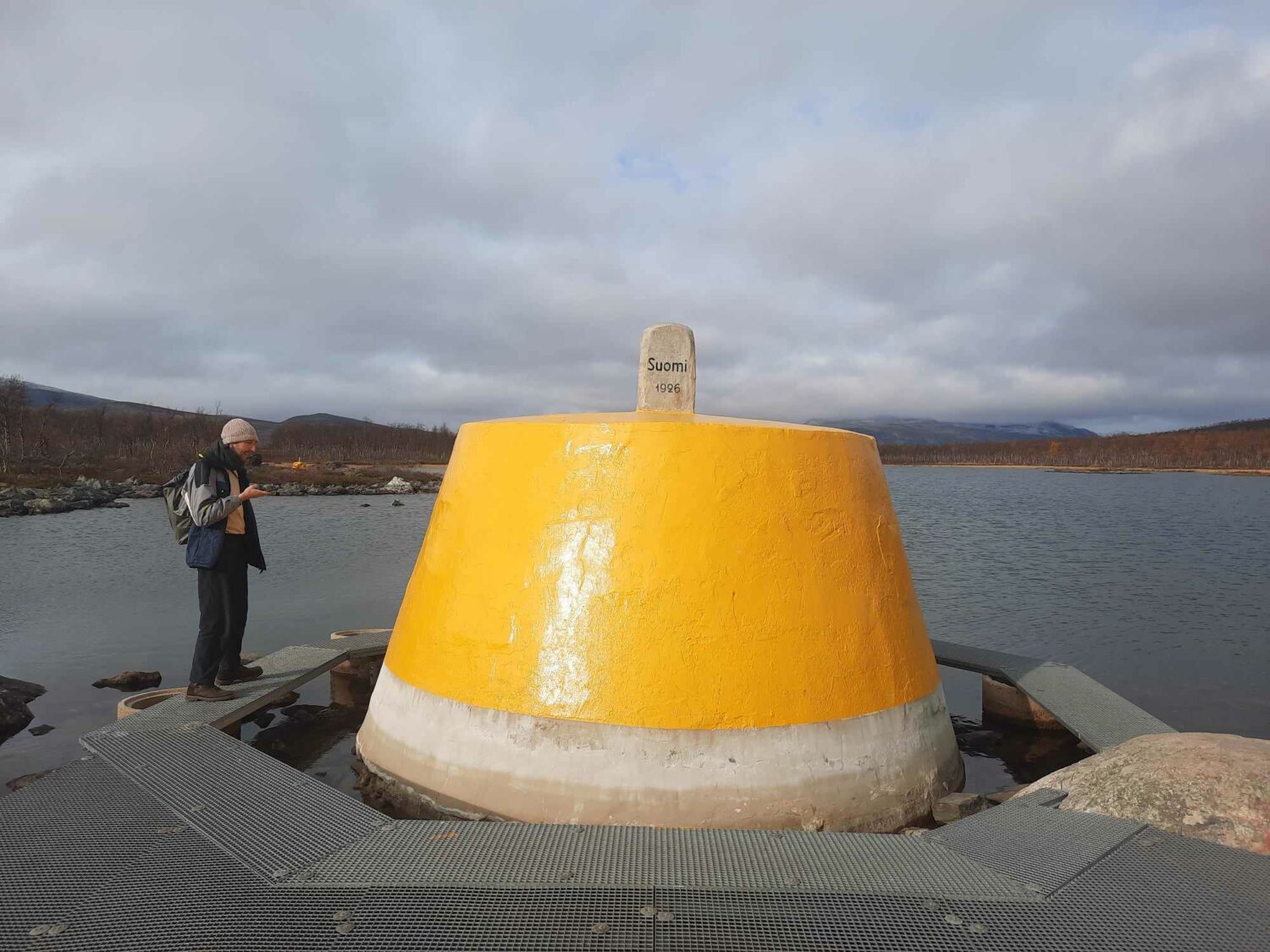
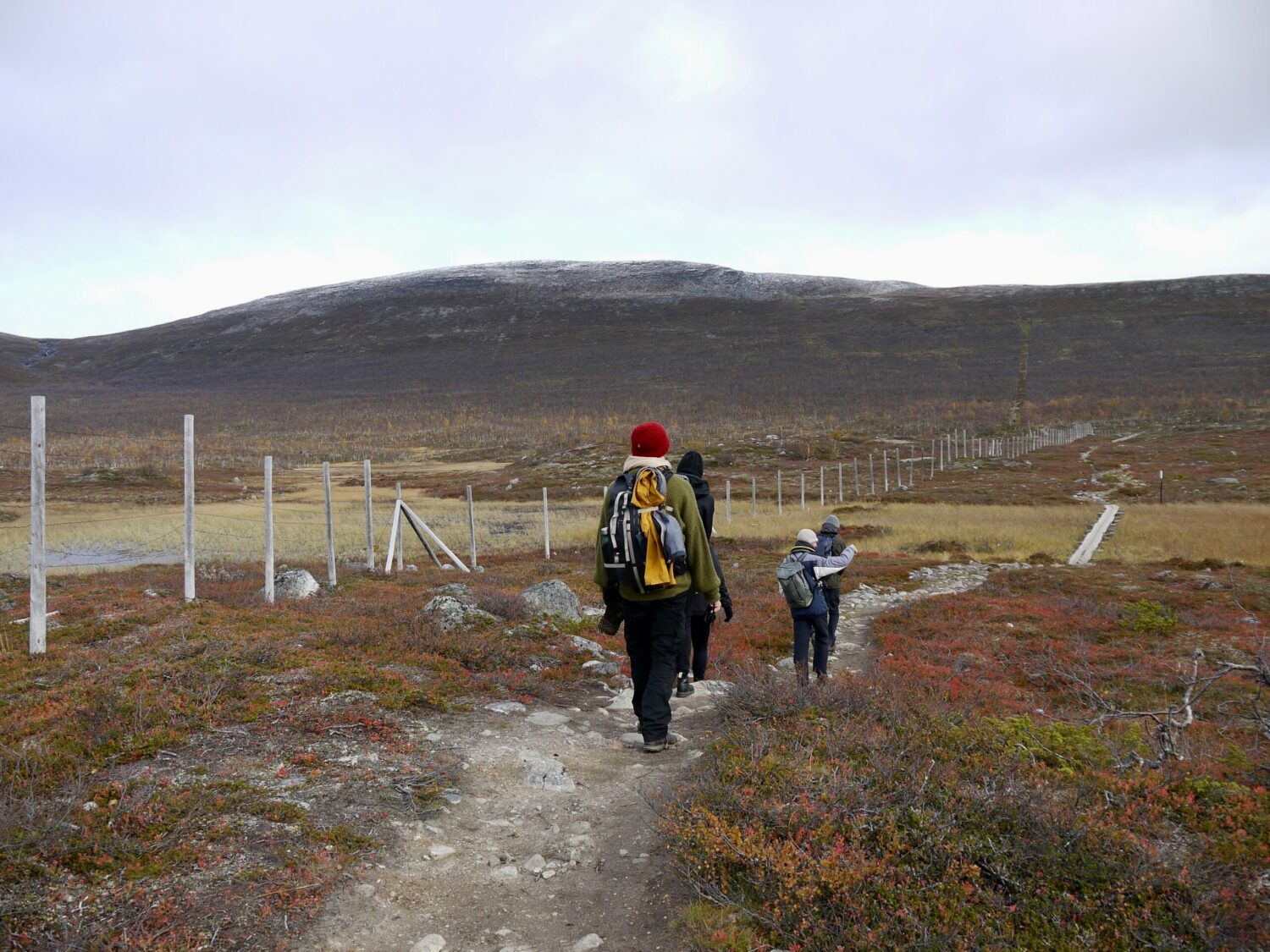
At the end of the camp, the Wait and Hear group curated an evening to share their intensive somatic listening experience with a “whispering circle”. Everyone sat in a circle, with the task of whispering the same sentence from one person to the next.
“It was very funny, everyone heard something different,” recalls Till. The artists invited participants to meditate by the lake, barefoot despite its six degrees, they printed photos, posted questions, installed a wind harp connected to trees by contact microphones, raised a bioplastic flag… The evening concluded with another whispering circle. “This time, the sentence went around almost unaltered. It was an interesting evolution.”
Elizabeth Mc Ternan and the Andscapes group: Superposing landscapes and their stories
Before exploring “Andscapes”, a concept of the landscape architect Martin Prominski whom she discovered by chance, Elizabeth McTernan was very much involved in counting. In 2017, during a ten-day residency at the Kilpisjärvi biological station, she worked with a mathematician to explore “what it means to count, to collect data, and the subjectivity of this exercise.”
Andscapes is part of a continuous re-questioning of measuring tools. The concept was developed “to overcome outdated dualisms of city versus country, or culture versus nature” and to conceptualize “an integrative practice in the Anthropocene”. For Elizabeth, it’s about “finding a non-standard approach to the landscape in view of climate change”.
Her way into this quest was studying the tools used to observe and measure this landscape: “Acknowledging that every tool brings associations, narratives, expectations. Andscapes emphasizes the ‘and’ in landscape. It’s not that there is one totalizing view of the landscape, but rather layers on top of layers, multiple narratives and truths that overlap and don’t erase each other.”
This vision comes to life in the group walks through the region’s stark physical landscapes. Accompanied by Leena Valkeapää, a Finnish artist living in Kilpisjärvi, the group observes the absence of traces of Sami culture.
“In some ways, Sami culture is invisible,” says Leena in the middle of a space loaded with a history that is invisible to those who don’t know it.
Elizabeth agrees: “It really stuck with me, this idea that if you want to forget, you really can. It’s depressing, but potentially powerful. The cultural elements that Leena was pointing out were entirely invisible to me. The only thread left, if you can’t read this landscape, is narrative. This is the thing between visibility, invisibility, forgetting, remembering. My main takeaway is how narrative itself is a really concrete tool that really holds information.”
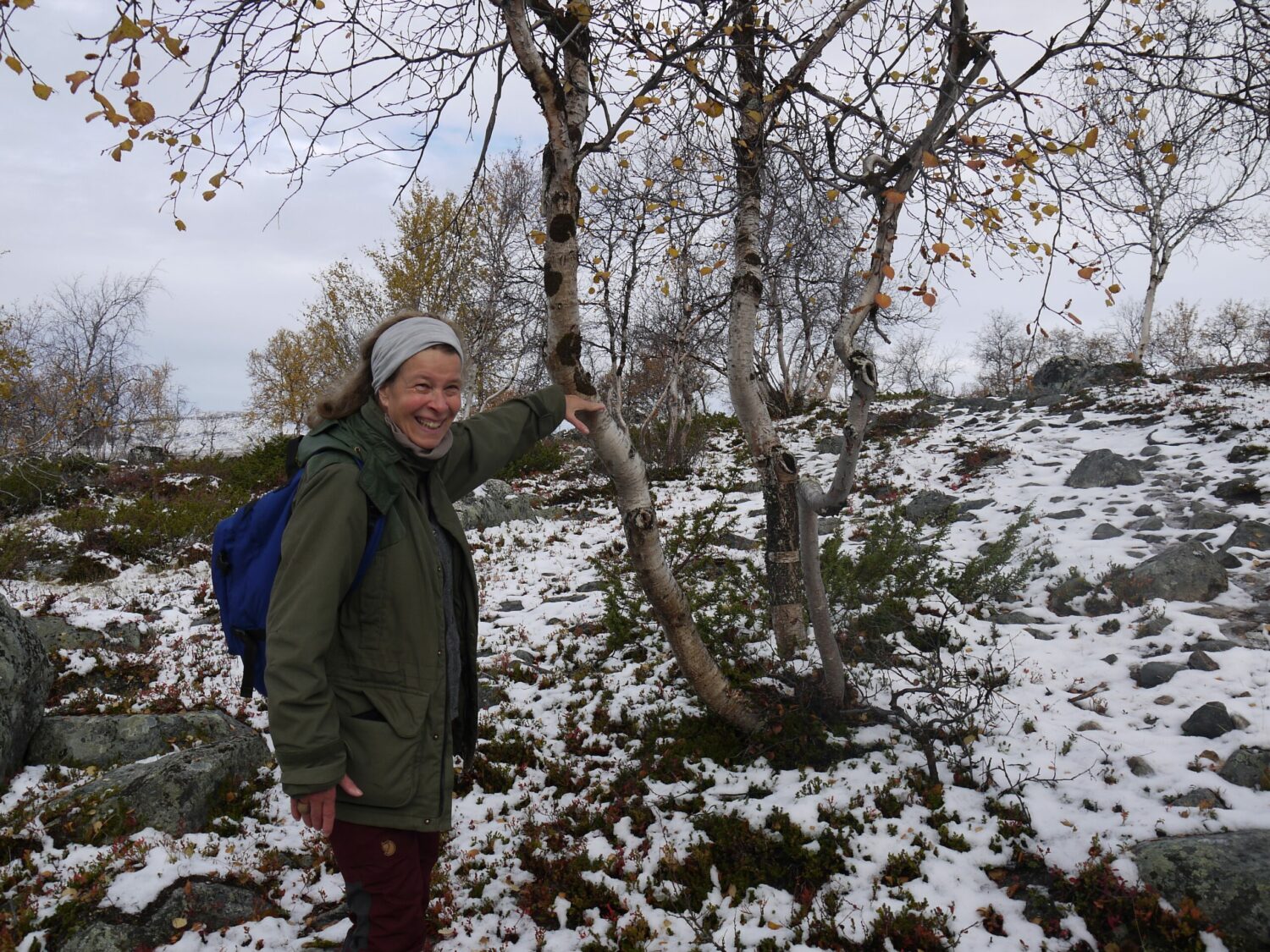
The narrative tool is both concrete and political. Leena tells us how the Finnish Tourism Office used storytelling to portray the Maala and Saana mountains as two giants who fell in love. In order to fabricate a feeling of authenticity, it added that the mountains are sacred to Sami people, which is false.
“It’s almost like saying ‘your narrative wasn’t strong enough,’” comments Elizabeth. “There is no hero in this story, no David vs. Goliath structure, no high point.” She takes the example of the Himalayan mountain range, where mountains didn’t have individual names, because they were “conceptually understood as a part of a group”. European values gave them individual names: Mt. Everest was named after British geographer and general explorer of the Indies George Everest (against his will); Peak Hawley was named after the American journalist Elizabeth Hawley (also against her will).
“Everybody is sort of guilty, because these narratives make or break a future,” Elizabeth reflects. “People use it to protect the moutains, the area, but forget the step where they check to see if it means something to the locals.”
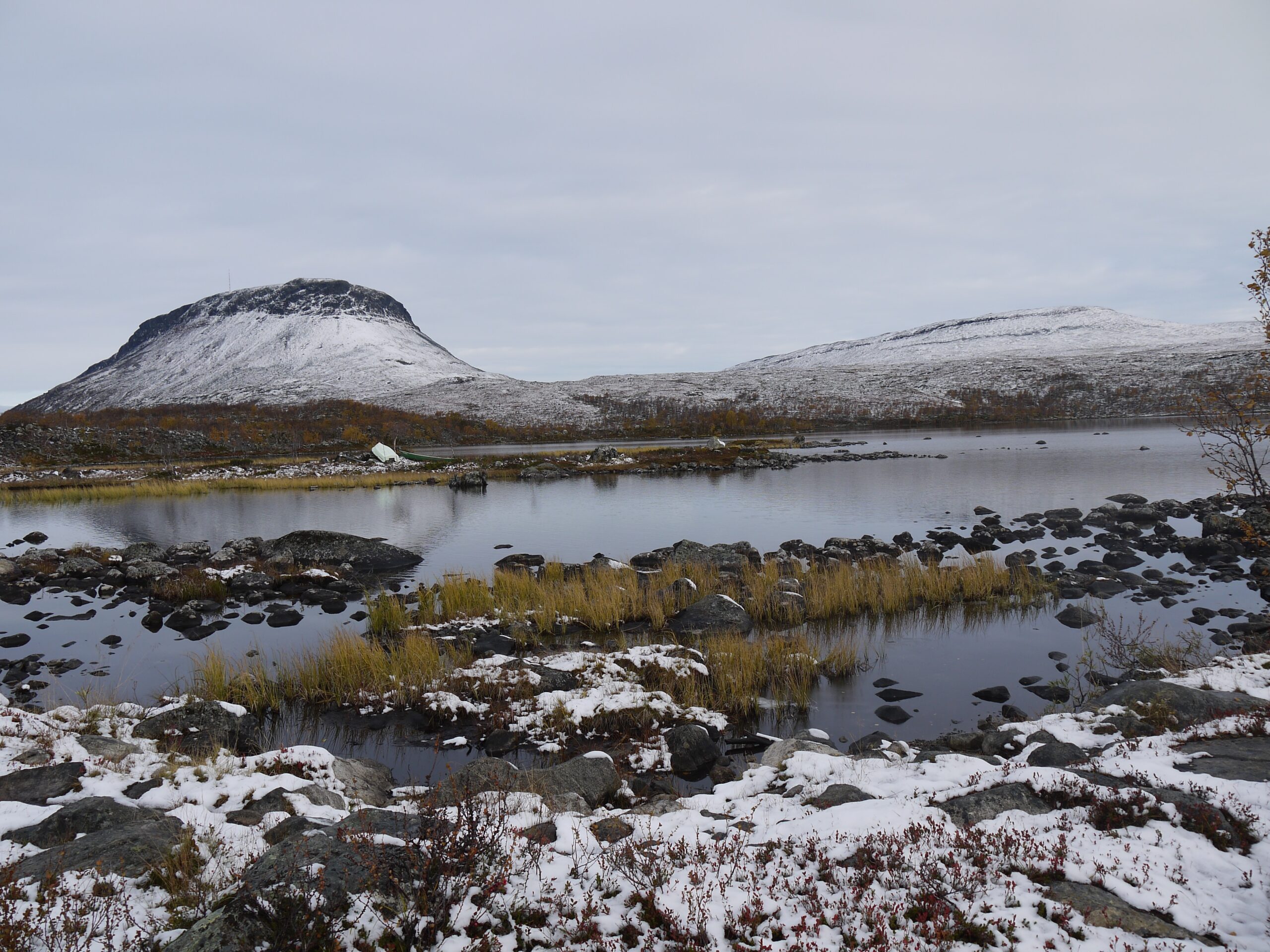
Bioart Society is part of the Feral Labs network of the cooperative project Rewilding Cultures, co-funded by the Europe Creative programme of the European Union
